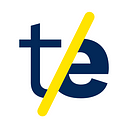Don’t let your platform dictate your IoT device strategy
An open, platform agnostic approach is needed for devices to manage the winds of change of IoT technology providers
Many connected product makers have been forced to reconsider the technology their products are based on following Google’s recent announcement to retire IoT Core on August 16, 2023. This will be no small task. Since IoT platforms are used to connect tens or even hundreds of thousands of devices, having to find a new one could have an impact on the software in every IoT device. With these devices having been built to a precarious balance between cost and capability.
Strong winds in turbulent seas
Connected product makers rely heavily on IoT platforms. They allow them to remotely monitor devices — and as a result solve problems remotely, reduce the time to repair (MTTR) and increase first time fix rate (FTFR). In a recent study, Forrester reported that remote monitoring enabled a 35% reduction in unplanned maintenance. And a growing proportion of remote monitoring cases also allow the firmware and software of the device to be enhanced with new functionality and improved security, as required by new cyber security standards.
Google isn’t alone in changing its approach to IoT. According to the market insights group IoT Analytics, the number of IoT platforms is no longer growing for the first time since 2015. The number of publicly known “IoT platform” providers more than doubled from 260 to 620 between 2015 and 2019, but reduced slightly to 613 in 2021. The IoT platform market continues to consolidate, with the market share of the top 10 providers growing to 65%, and 188 (19%) providers discontinuing operations during the two years leading up to 2021.
Managing uncertainty
So, with the market increasingly aware of the business benefits of remote monitoring and the IoT platform landscape evolving, where should connected product makers place their bets?
Enterprises have two options:
- Back a winner — who will remain as the market evolves. However, without a crystal ball it’s impossible to know who will be left and your chosen IoT platform might evolve away from your requirements down the line.
- Plan for change — build the ability to change IoT platform providers into your connected products from the outset.
For connected product makers with large fleets of devices already deployed, there is the added complication that their current IoT platform may not be a “winner.” When that’s the case, they will need to incorporate the capability to “change” IoT platform into their devices remotely.
First steps
Connected product makers who sell through indirect or B2B2X channels have already recognized the need for IoT platform flexibility, since they don’t know what IoT platform their end customer will use. Typically, this flexibility is delivered by providing a single unique software image for each product that incorporates a range of pre-integrated IoT platforms. This image can be pre-installed at manufacture or downloaded for aftermarket installation.
For connected product makers this approach has two major drawbacks:
- Each new IoT platform needs an entirely new software image to be developed and maintained for each impacted product for the lifetime of the product — increasing effort but not adding value
- Installing the software image to connect to a new IoT platform may require product makers to rebuild the device and re-install the associated apps — which would take the device offline for an extended period and increase the risk of permanent disconnection
Fortunately, the containerization of software is simplifying remote software updates. Unfortunately, the majority of device software is not containerized, and a large proportion of the fielded devices are too resource constrained to support containerization.
An open approach is needed
What connected product makers need is an open software connector for IoT devices that works well with everything — one that is agnostic of IoT platform, software language and device hardware. They need a connector that supports strong connection security and allows new IoT platform connections to be established purely through configuration. They need a connector that provides robust device management that is extendable for any firmware or software package type.
The open-source thin-edge.io project was founded by a diverse group of embedded software, IoT platform software and security specialists to solve the common problems of cloud agnostic connectivity and robust device management that need to be overcome when developing connected products. And being open-source, it’s FREE-to-use, customize and extend under the Apache 2.0 license.
thin-edge.io’s ready-to-use modular components have been specifically developed to work in resource-constrained devices like industrial PLCs, protocol gateways and devices using Linux-based operating systems. It’s pre-integrated to a growing number of IoT platforms leveraging Microsoft Azure, Siemens Mindsphere, Deutsche Telekom Cloud of Things, Software AG Cumulocity IoT, AWS IoT and more.
No other initiative is as focused on openly providing the core connectivity and device management capabilities for the 50% of resource constrained device projects that use a Linux-based operating system as thin-edge.io. It is embedded into a growing number of IoT products, including the Kunbus Revolution Pi series, and is already used in a wide variety of industries.
Join us to learn more
Hopefully I have sparked your interest to learn more about thin-edge.io and potentially trying it out for yourself. The online community meetups are the best way to discover the latest advances of the project and its uses.
thin-edge.io Community Meetup #5 | Thu, Sep15 at 10:00 EDT / 15:00 BST / 16:00 CEST
At the next event we will cover a preview of release 0.8, integrating to OPC-UA industrial assets, delivering motorsport telemetry, connecting to AWS IoT, and deploying in the Yocto framework.

